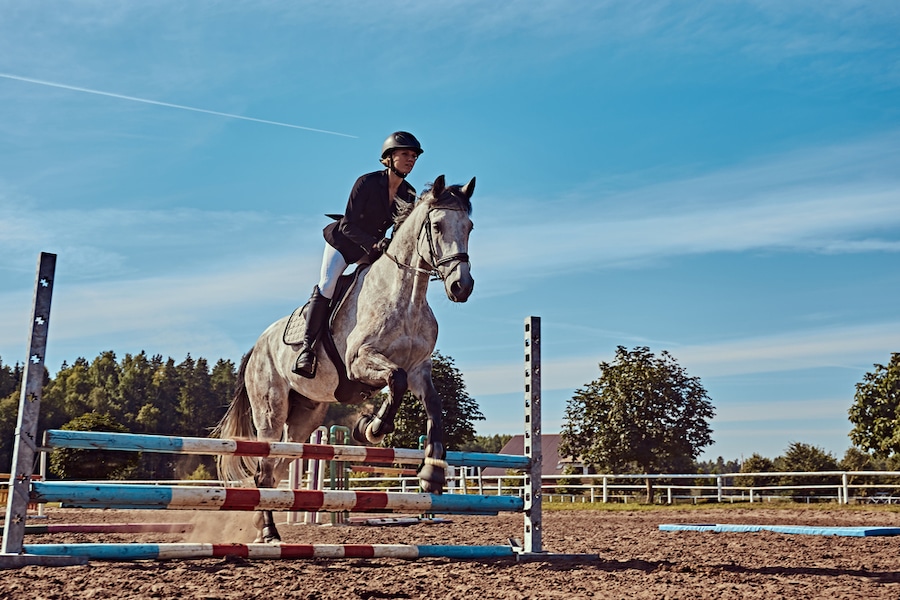When we think of the perfect arena footing, we think of a top footing that clumps together easily, has a little give, and can retain just enough moisture to ward off excessive arena dust. This consistency helps cushion your horse’s movement while giving them support and much needed traction.
Unfortunately, the best footing for horse arena is difficult to achieve and even more difficult to maintain.
Whether for a dressage arena or for one focused on barrel racing, the arena surface is a dynamic material that is ever evolving. With use, time, and weather, what starts out as a simple material becomes increasingly more complex, usually with additions such as synthetic footing, dust control agents, and at least some percentage of organic material.
As lifelong equestrians, read below for our tips on what components make the best footing for horse arena and where to contact a footing specialist for more information.
Good Footing Depends on a Great Arena Base
No matter how much effort you put into your footing, understand that it’s performance is reliant on a well built base.
To build a solid base layer, you must know the attributes and challenges of the land you are working with and plan accordingly. This includes knowing how deep you should dig the initial layers of your arena, in addition to whether you require additional mechanical support such as geocells or geotextiles. These measures, in addition to choosing the correct substrate, will ensure your stability and drainage are even across your area, thus helping your footing perform at its best.
In fact, the base is such an important part of your arena, we have an article dedicated to the topic here.
Manufactured Footing Material
For many, their native arena soil is deficient in some way or another. It is either too deep, too dry, or soggy from poor drainage. Over time, you encounter the challenge of compaction, in which the top layer of your footing becomes clay-like and no longer absorbs the shock from the weight of your horse.
Here, manufactured footing materials can greatly improve your riding surface. These purpose-made materials, either rubber chips or shredded textiles, can be cost effective and long lasting solutions to lackluster footing sand.
These materials, such as GGT, FoamFooting, and Trutex, all help both the horse and rider enjoy an easier and safer training experience. When mixed with sand, these types of footing help add cushioning, support, and moisture retention to your arena.
As these materials are incredibly durable, they last for several years without any noticeable decomposition or decrease in performance. Similarly, they are far more resistant to adverse weather conditions such as extreme rain, cold, and heat, when compared to other additives like dust control agents.
Dust Control Additives
Another important component to the overall composition of your footing are dust control additives. This is particularly true for arenas that might want to keep manufactured materials to a minimum and thus have a higher concentration of shifty materials such as stone dust and small-particle size sands.
There are just as many dust control options as there are footing materials, with various levels of environmental safety and heat resistances. It is therefore always important to look at the ingredients of the additive you are using to ensure it will not be a lung irritant to you or your horse.
Because many dust control agents are polymer based, it is also important that you take into consideration the temperature and weather conditions in your arena. Some products will either change composition or begin to decompose in extreme moisture or heat, making them a poor choice for certain locations.
Long Time Equestrians Turned Footing Experts
Most footing companies are run by salespeople. The thing is, unless you have been a rider yourself, you are not going to understand the needs of an arena. That’s why as riders, we developed an Arizona company to provide equestrians with help from years in the industry and first-hand experience.
Our team would love a chance to speak with you, answer your questions, and even provide a free quote. We are easy to reach, simply contact us or call directly at 877-835-0878.
